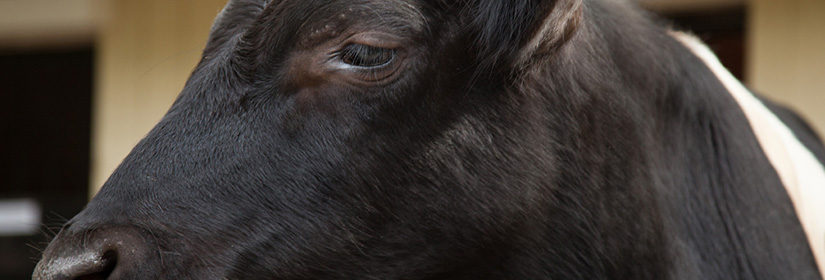No products in the basket.

Liver fluke at housing has a significant negative effect on liveweight gain
A recent study in the Veterinary Record has shown that the presence of fluke infections in cattle at housing resulted in a serious reduction in liveweight gain during housing. The study which was conducted by monitoring 4 groups from a group of 64 weanlings (170- 370 kg ) in Scotland. One group was left untreated, while each of the three other groups were treated using a range of treatments. Before treatment the cattle were monitored for the presence of liver fluke infection by using two tests: liver fluke egg visualistaion and coproantigen testing.
Cattle which were positive for the presence of liver fluke at housing were shown to have a significant reduction in liveweight gain over the winter housing period, ie. on average they gained 20.5kg less over the 112day period, compared to those with no fluke eggs. Flukicide treatment of cattle that had fluke eggs resulted in a significantly improved liveweight gain (+8kg) compared to those which were left untreated, however they failed to gain as much weight as those which were negative at the start of the study. Faecal coproantigen testing was shown to identify infected animals at an earlier stage than conventional liver fluke visualisation tests.
The study shows the importance of monitoring and treating for liver fluke in cattle. Given the differences in liveweight gain between infected and noninfected animals there can be a significant economic loss associated with liver fluke in feeder cattle. If one assumes a liveweight value of €2.50 per kg for average quality weanlings , a 20.5kg loss of thrive could potentially equate to monetary loss of €50 per animal. The abstract of the article is shown below:
Veterinary Record doi:10.1136/vr.102720
fficacy of treatment of cattle for liver fluke at housing: influence of differences in flukicidal activity against juvenile Fasciola hepatica
- A. B. Forbes, BVM&S, PhD, DipEVPC, MRCVS1,
- D. Reddick, BSc(Hons), MSc2 and
- M. J. Stear, BSc, PhD3
+ Author Affiliations
1Scottish Centre for Production Animal Health and Food Safety, School of Veterinary Medicine, University of Glasgow, Bearsden Road, Glasgow G61 1QH, UK
2Moredun Scientific, Pentlands Science Park, Bush Loan, Penicuik, Midlothian EH26 0PZ, UK
3Veterinary Genes and Proteins Group, Institute of Biodiversity, Animal Health and Comparative Medicine, Garscube Campus, Glasgow University, Bearsden Road, Glasgow G61 1QH, UK
- E-mail for correspondence: [email protected]
Abstract
Flukicides are commonly administered at housing to cattle that have grazed fluke-infected pastures or that have been purchased from endemic areas. The choice of product is determined by numerous factors, one of which is the stages of Fasciola hepatica that are killed. Flukicides can be categorised into three main groups: (A) those that kill all juvenile stages and adults; (B) those that kill juveniles from six to eight weeks of age and adults and (C) those that kill adults only. This study was conducted on a commercial beef farm in Scotland and was designed to compare the efficacy of flukicides from each of these three classes in terms of their effects on faecal egg output, coproantigen and liveweight gain. The majority of animals in the untreated control group were positive for coproantigen, fluke eggs or both throughout the study duration of 16 weeks. Egg reappearance interval following housing treatment was eight weeks for clorsulon and 13 weeks for nitroxynil, though patent infections in both groups developed in only a small minority of animals; no fluke eggs were recovered from cattle treated with triclabendazole. Coproantigen was detected four weeks before the reappearance of fluke eggs in the dung. Animals treated with flukicides had significantly fewer faecal samples positive for eggs (P<0.006) and coproantigen (P<0.05) following treatment compared with the controls. Despite differences in the efficacy profiles among the flukicide-treated groups, there were no significant differences (P>0.05) in growth rates among any of the four treatment groups. There was, however, a significant negative association (P<0.001) between fluke positivity at housing and subsequent growth performance, irrespective of treatment group.
